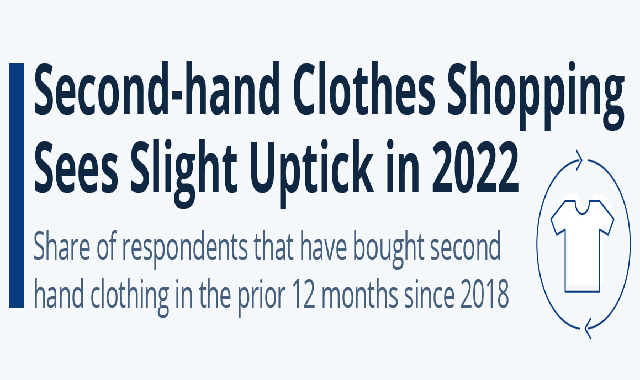In comparison to buying new clothes, the second hand clothes market is still fairly small but, according to Statista’s Secondhand Apparel dossier, there has been growth in this business particularly in the regions of the United States and Europe.
The swing can be seen amidst increasing concerns for the state of the environment and heightened awareness about the role of sustainability. Benefits that are attained by promoting second hand shopping can help minimize waste as the lifetime of clothing items is extended whether that is through fewer clothes ending up in landfill or using fewer resources such as water and energy in their production. Second hand clothes include those bought through traditional thrift stores as well as online channels that offer resale marketplaces and even luxury items.
As the infographic shows, even though second hand shopping
has been more popular in the U.S. than the other surveyed countries since 2018,
when Statista first started the survey, several countries in Europe are
catching up. The French second hand market has experienced the biggest
gearshift, with a 13 percentage point increase in second hand shoppers in just
four years. The United Kingdom trails just behind, also with nearly a third of
respondents having selected the option of pre-owned clothes in the previous 12
months. By contrast, second hand shopping is less popular in Spain, where only
16 percent of respondents said that they had done it recently.
Although only minor, 2022 saw a slight increase across all
five of these markets. Probable reasons for the change according to Statista’s
Secondhand Apparel dossier include the rise of resale apps such as Depop and
Vinted, as well as the growing trend for retailers such as H&M to promote
second hand clothes, and the changing shopping behaviors of younger generations
who are more environmentally conscious.
Infographic by: statista


